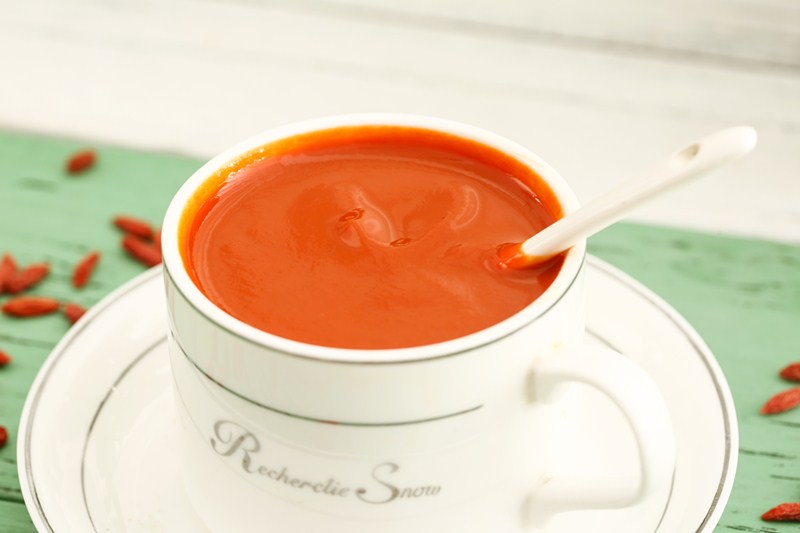For the first time, scientists at Carnegie Mellon University performed a comprehensive proteome analysis of protein changes at different developmental stages of animals. The results obtained are surprising and will likely allow scientists to re-examine how proteins are organized to develop embryonic development. Assume the key steps in the process. These findings may provide a sensitive test on some day in the future to detect how a drug or chemical agent in the environment affects a particular protein network and impairs development. The long-term hypothesis is that in a key growth step of the development process, several specific proteins involved in cell transformation are activated before the cell population changes shape. The actual observation of the research is just the opposite. The research results published in the Development magazine show that many different kinds of proteins are involved in this process. The start of a change in the morphology of a specific cell population is actually preparing for the transformation of cells in advance. The researchers carefully studied the entire proteome of Drosophila melanogaster embryos. They compared the three stages of the protein development of Drosophila in order to understand what happens to the proteome when some cells fold to form structures that specifically include nerves, immune systems, and muscles. This phase of gastrulation, known as gastrulation, is a critical growth step for all animals from insects to humans. In the process of gastrulation, a process known as ventral furrow formation, the cylindrical cells along the lower part of the fruit fly become vertebrate, causing them to begin growing inside the embryo. In this proteome analysis, scientists discovered that the abundance of many types of proteins has undergone significant changes before gastrulation, including the regulation of metabolism, protein production, proteolysis, and the formation of cytoskeleton-associated proteins. Previous genetic studies provided only limited information on gene regulation of sinuate cell differentiation signaling pathways, but did not provide how these changes occur in concert. The results of the study confirm that the formation of rifty sulcus is a complex process involving almost all cellular processes. The researchers also discovered that only one protein is activated just at the moment when the cell changes its morphology. This protein is part of a complex organelle that is responsible for degrading proteins, the proteosome. The results suggest that before the cells in the rifty sulcus begin to change morphology, the cells begin to degrade some proteins, such as cytoskeletal proteins, that prevent cells from forming columnar structures. To confirm that protein changes during the formation of ventral furrow are critical to developmental processes, the researchers used RNA interference (RNA interference) to reduce the expression of specific genes and thus change the protein abundance. To compare changes in protein species and abundance at different stages of development, the researchers used Amersham's Difference Gel Electrophoresis (DIGE) technology to label two protein samples with different fluorescent dyes and run them together. The charge and size are used to distinguish the proteins, and the abundance of various proteins on the gel and the difference between the two samples are analyzed by a computer program. This study is only a starting point. Comparing the differences between the protein groups at different developmental stages of the animal, combined with other research methods, will help to uncover the veil of proteomic function/interaction networks during development or disease conditions.
Qixiang is the best Chineses organic Goji Berry Juice Concentrate company. We are manafactorer and supplier of Organic Wolfberry Juice concentrate. And we also can supply all of qualifications you need. Organic goji concentrate juice concentrate as a kind of fruit juice concentrate are good for your skin with much nutrition and help you lose weight with low calories and good taste.
Usually, the material for concentrate should be clear juice, yet Goji Juice is thick and turbid. According to the tests made by American and Japanese clients, 70% nutrients of Goji juice, especially mass active ingredients, are contained in pulp and pigment. So, be it juice or concentrate, turbid juice should be used.

Appearance
1) Color: Red or deep red.
2)Taste & Odor: Fresh Goji Berry Juice concentrate taste and smell, no peculiar smell.
3) Histomorphology: Turbid liquid with pulp, allowing the pulp precipitation phenomenon after completely standing.
4) Impurity: No visible foreign impurities
Physics & Chemical Specification
1) Brix(%): ≥24.0
2) Total Acid(g/100mLas Citric Acid): ≥0.8
3) pH: 3.5-4.1
Microorganism Specification
1) TPC (CFU/mL): ≤100
2) Yeast (CFU/mL): ≤100
3) Mould (CFU/mL): ≤10
4) Coliform (CFU/mL): ≤10
Additive
NO
Country of Origin
ZHONGNING, NINGXIA, CHINA
Package
1) Inner package is 200kgs aseptic bag, outer package is opening steel drum.
2) Inner package is 25kgs aseptic bag, outer package is opening steel drum.
Storage
Should be stored at room temperature in clean, cool, dry warehouse, prevent sun, rain, and not be stored with corrosive, toxic, and smelly item. With these conditions, product shelf life is 18 months. (suggestion: 5-8℃).
Organic Goji Juice Concentrate (Brix 25%)
Organic Goji Juice Concentrate (Brix 25%),Health Organic Goji Juice Concentrate,Organic Low-Fat Goji Juice Concentrate,Organic No Additive Goji Juice Concentrate
Ningxia Qixiang Biologic Foodstuff Co., Ltd. , http://www.qxgoji.com
